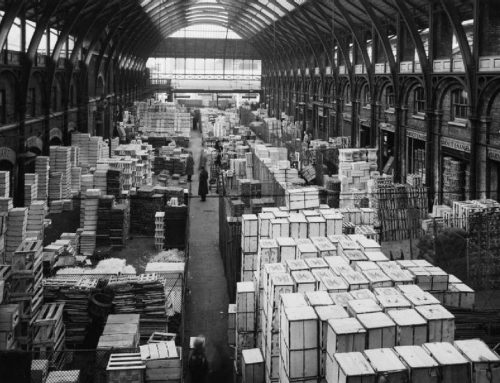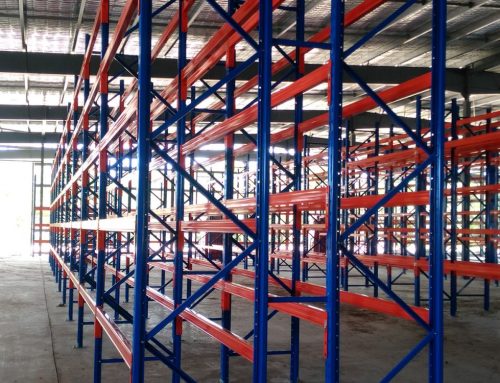Is Warehouse Automation The End of Manual Labor?
“The future is now” is a phrase so often heard of that one gets sick of it. It is said not just in movies, but in numerous speeches uttered by worldly, talented men and women whose role is to be role models to those who strive for the future. It is a phrase meant to inspire, meant to encourage mankind to move forward and reach for the unreachable, to seek thoughts and innovate, to dream of tomorrow and prosper. Well, what if this phrase is also meant to describe the direction the world’s technology is turning to? Because here’s the thing—tomorrow’s technology isn’t created tomorrow, but rather today. Things like warehouse automation were once merely thoughts of the past, but because they were acted on, they became a reality.
Having said this, one must acknowledge that unfortunately, everything comes at a price. These ideas and concepts were thought of by human beings and now the general impression of some is with the advancement of technology comes the decline of the human workforce. Such is true with the impression of warehouse automation, wherein tasks once assigned to Homo sapiens sapiens are now being done by these robots – or are they really? Is the human workforce truly and being entirely replaced by ‘intelligent’ machines created by man out of wires, gears and data? Will the rise of robots truly be detrimental to manual labor in the world of warehouse automation?
The Game Changer: Warehouse Automation
Photo courtesy of camo via Pixabay
Ever since they were conceptualised by great thinkers, the main purpose of the warehouse was to store various items of all shapes and sizes. As time went by the design of the basic warehouse changed yet the purpose remained the same: for storage. And who exactly used these warehouses? Humans, that were congregated into businesses. These humans, often carrying clipboards, walked the many rows in their warehouses in search for items to supply to their customers. Sometimes the item was heavy and technology came in the form of a forklift operated by another human. But still the process remained the same.
That is, until warehouse automation
Perhaps (and this is, but a theory) it all began something like this: papers were replaced by handheld computers, where with just a few clicks the worker would be able to find what they needed. Then these devices were replaced with tablets, or smartphones, and with a few taps they could see where they needed to go. It evolved into what is now known as warehouse automation. Many retailers are using these systems as the processing time can be shortened to a fraction of what it was originally, thus lessening the total operating costs of the company.
With the growth of automated warehouses, the human factor has decreased, though not completely. These days there is a fierce competition, with many of the developers who are creating these systems coming from what one may probably call the mother of all warehouse automation systems—KIVA.
The Company in Focus: Amazon
Photo Courtesy of Simon via Pixabay
Nobody does warehouse automation like electronic commerce and cloud computing giant, Amazon. What started in a garage (much like the beginnings of most mega companies these day) is now a global company catering not just to the United States, but to other countries such as Ireland, Italy, Japan, Indiato name a few and very soon Australia. There once was a time when Amazon staff rang a bell in the garage to signify a sale, but nowadays, but the company makes thousands of sales per second . With so many sales, Amazon simply cannot rely on manual labor alone. Consequently, there are at least 45000 robots working inside 20 fulfilment centres to keep up with their customer’s demands all thanks to Kiva, now known as Amazon Robotics.
Here, you don’t go to the shelves; the shelves come to you. No longer do their workers have to walk for miles, but instead, all they need to do is key in what is needed and whatever shelf the item is on comes to them. Simply said, Amazon has perfected blending warehouse automation with the people power needed to run the company. It’s also why Amazon decided to acquire Kiva for $775M dollars, renamed it Amazon Robotics, and therefore has monopolised the system for itself. A huge amount of money? Yes, but the savings the company makes are much larger. According to one Amazon executive, Amazon Robotics cuts the company’s operating expense by around 20%. Pretty impressive, huh?
The Newest Technology: Locusbots
Photo Courtesy of pcsupporttoday.com
Founded in 2014, LocusBots are definitely a step into the future. These machines were created to increase a company’s warehouse productivity by 5 to 8 times over the old system of carts and rubber shoes.
What makes these robots different from other warehouse automation systems?
Simple, really—they have a human-like intelligence. Quite similar to the moving shelves of Amazon discussed earlier, LocusBots move around the warehouse, approach the picker and wait to be loaded. Once done, these robots move the product to the dispatch point. LocusBots have cameras and sensors as well as an operating system which permits them to communicate with one another. They don’t collide with each other or attempt to undertake a task another locusbot is undertaking.
The At Risk: People Power
Photo Courtesy of voltamax via Pixabay
The number one concern of any worker is, will a robot take their place?
Remember the scene from Charlie and the Chocolate factory when the father returns home with the news that he’d lost his job in the toothpaste factory to robots? Later on, we learn he gets the job repairing the robots that replaced him. This is a wonderful example of how humans will be challenged by new opportunities of higher complexity.
Of course, we cannot all be repairing the machines that replaced us. Statistically speaking, in the United States alone, 22.7 million jobs will be lost to robots and machines by 2025; on the flip side, automation will, in turn, create 13.6 million jobs. There is a difference of 9.7 million, in reality there will be other job opportunities out there for that nearly ten million population.
In the end, there will still be a need for a human workforce as there as simply some things that cannot be done (and probably won’t be for a long while) by robots such as generating concepts for an ad campaign, caring for a newborn child or fixing an automated machine. Despite what many think, robots will not take over the jobs of the people. Instead, what will happen over time is the robots will be working alongside the people in order to create a more effective, functional and faster workplace. After all, what business wouldn’t want to go in that direction? There will always be a role for humans just as there will always be a room for technological advancements today.




